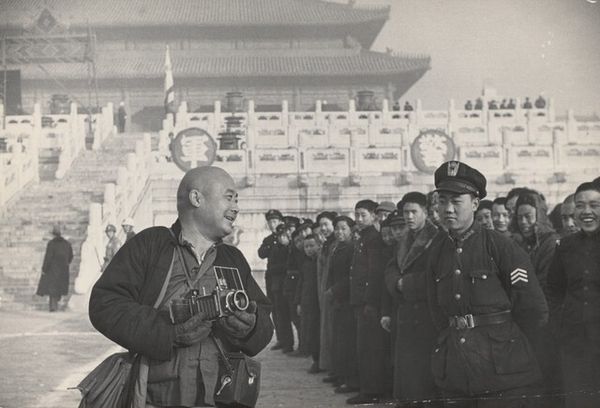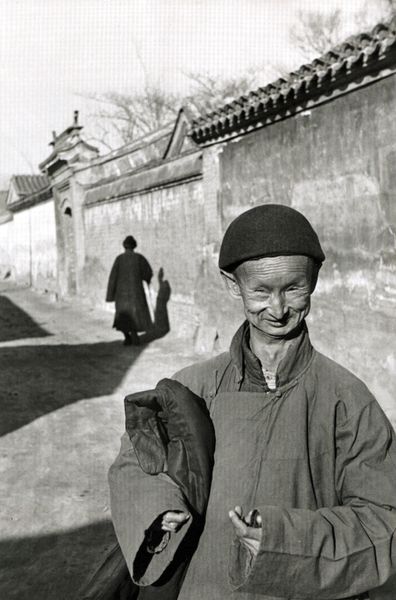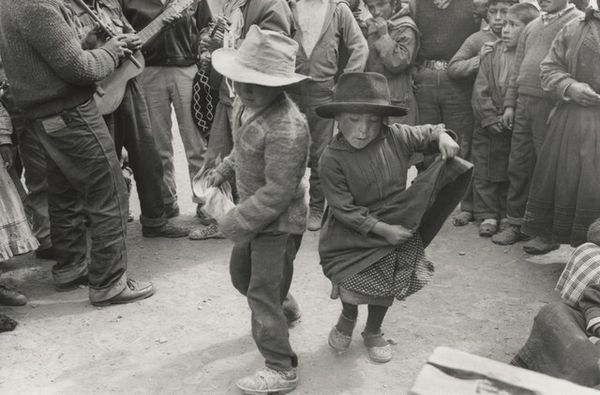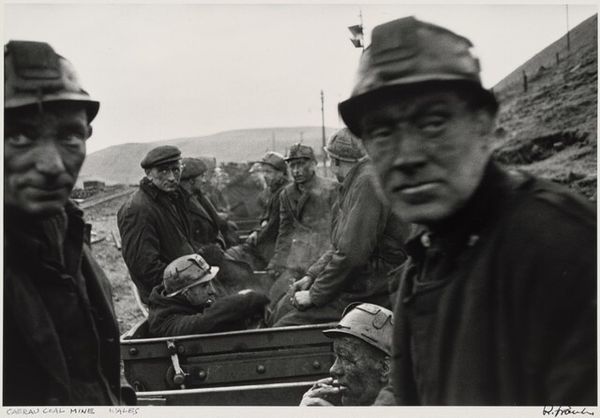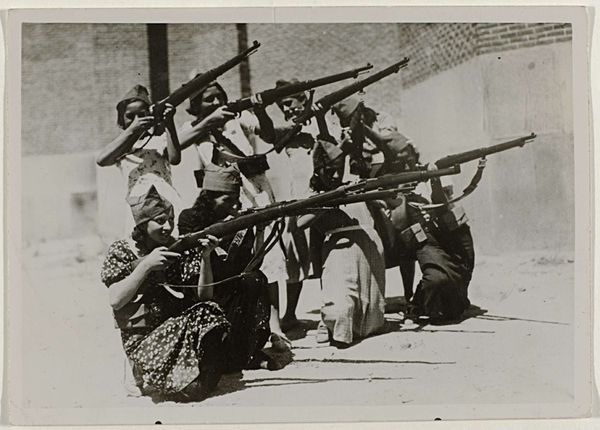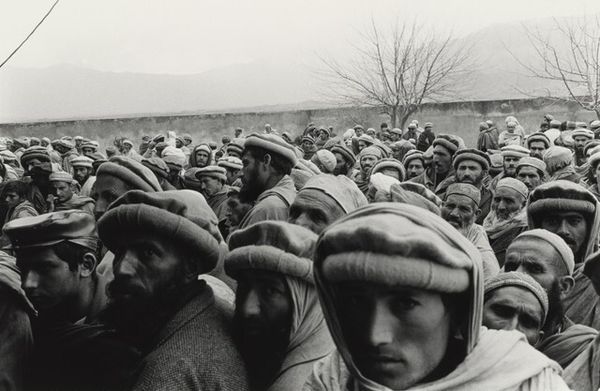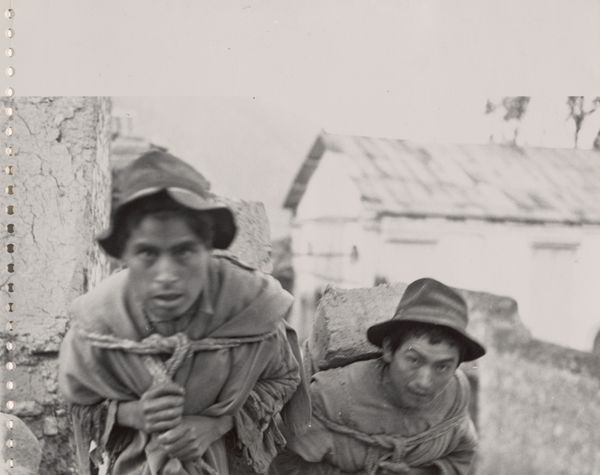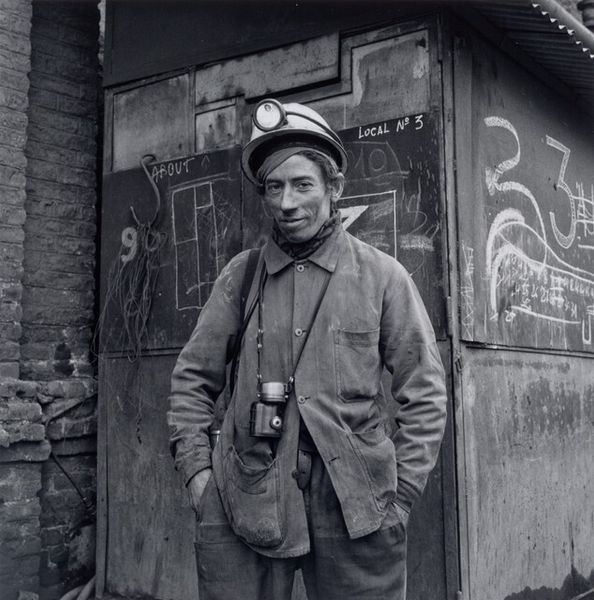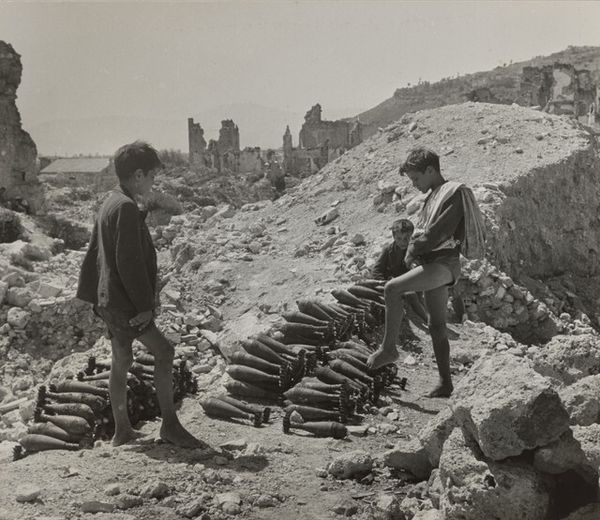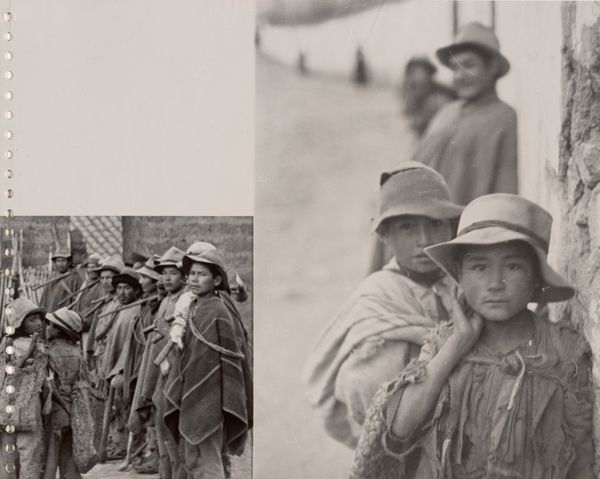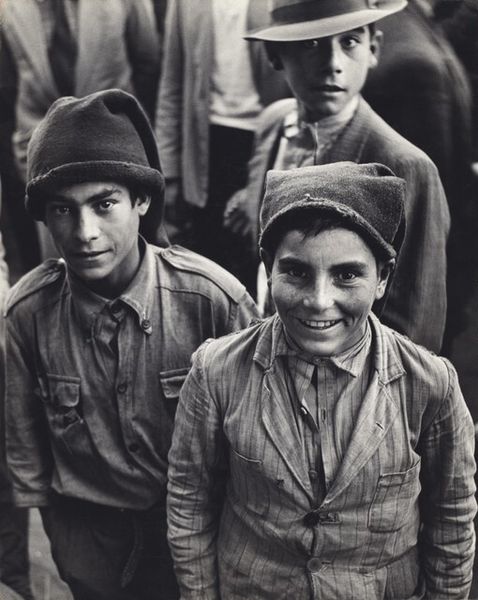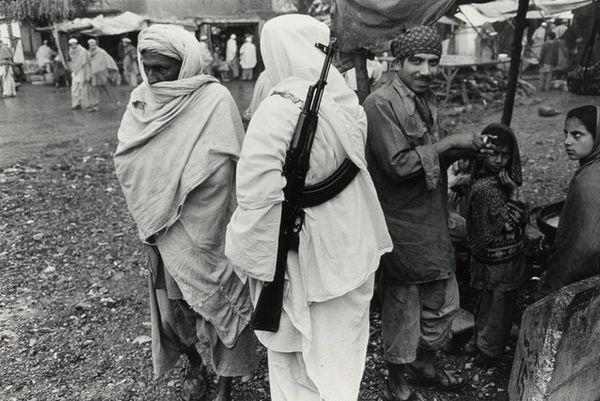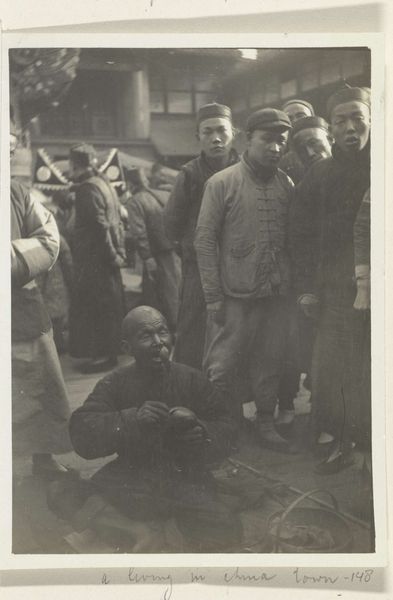
Dimensions: image: 23.9 × 16.5 cm (9 7/16 × 6 1/2 in.)
Copyright: National Gallery of Art: CC0 1.0
Curator: Cartier-Bresson’s 1948 photograph, “Children Scavenging Unburned Coal, Beijing, China,” captures a poignant moment in post-war China. What strikes you most immediately about this image? Editor: A weariness, I think. Not just on the children's faces, but woven into the very fabric of the scene. That monochrome palette seems to deepen the weight of the subject. It's raw. Curator: The composition indeed contributes to the weightiness. Bresson uses a classic street photography approach—capturing the children head-on as they move, giving a directness. Note also the formal arrangement in the composition; this brings order but doesn't quite dispel the feeling of melancholy. This was just before the Communist takeover. Editor: You know, it's more than melancholy, it's resignation in the children's eyes that tugs. And look at the clothing. These baskets that are carried, all point to immense struggle. How can these children scavenge coal with that kind of weight and poverty? I feel sadness but also anger when confronted with injustice. Curator: Photography in this period held immense social significance. Images such as this acted as a form of documentation but, also, a subtle critique. The wider distribution of photography allowed for narratives to be dispersed, impacting perceptions on a global scale and even sparking debate among influential social and political leaders. Editor: Makes you wonder, what became of them, doesn’t it? Did things get better, or were they caught in the sweep of larger events? Does photography allow for enough empathy from those with a different socio-economic standing? Curator: Such reflection speaks to photography's profound capacity. It’s able to prompt critical analysis of how society is ordered. And indeed, whether, with proper distribution, photography may, in some cases, shift the dial. Editor: I look at it now, and while that initial weariness remains, there's something else. Resilience, perhaps? Or just a hard-won understanding that's beyond their years. Curator: Yes, and I'd also say that beyond an image documenting scarcity in Post-War China, it serves as a reminder of both the vulnerability and the resilience inherent in the human spirit under duress.
Comments
No comments
Be the first to comment and join the conversation on the ultimate creative platform.
